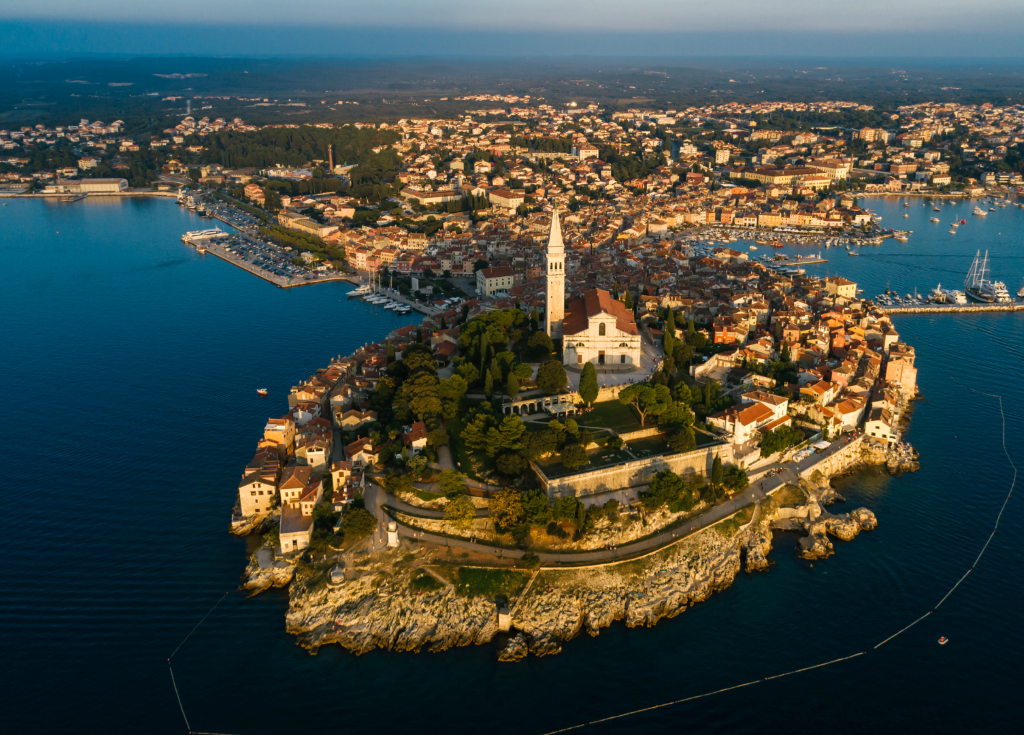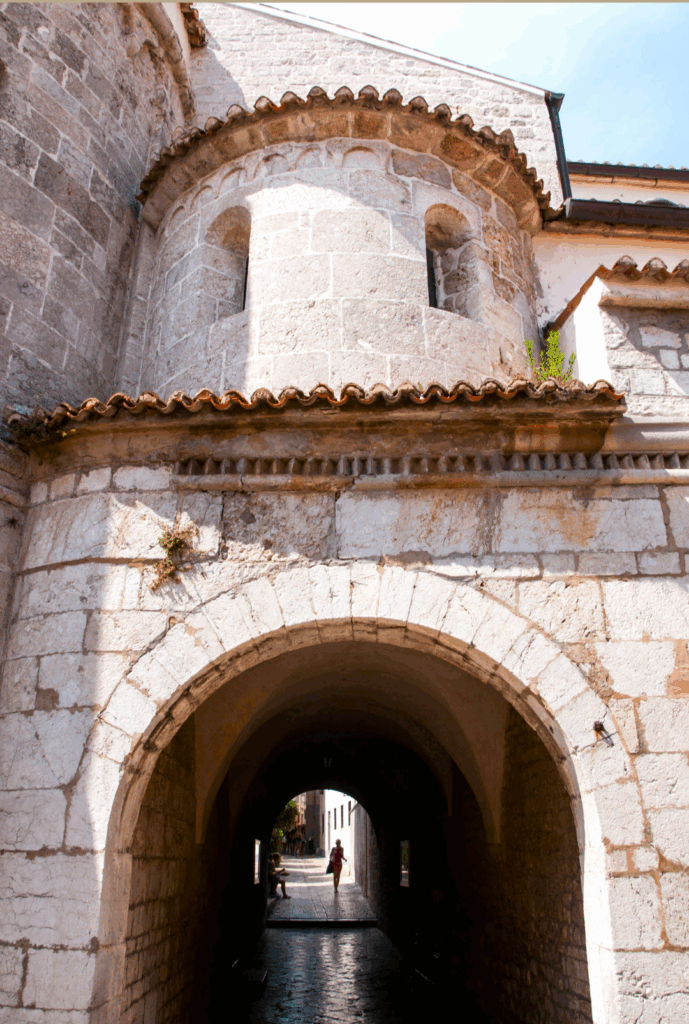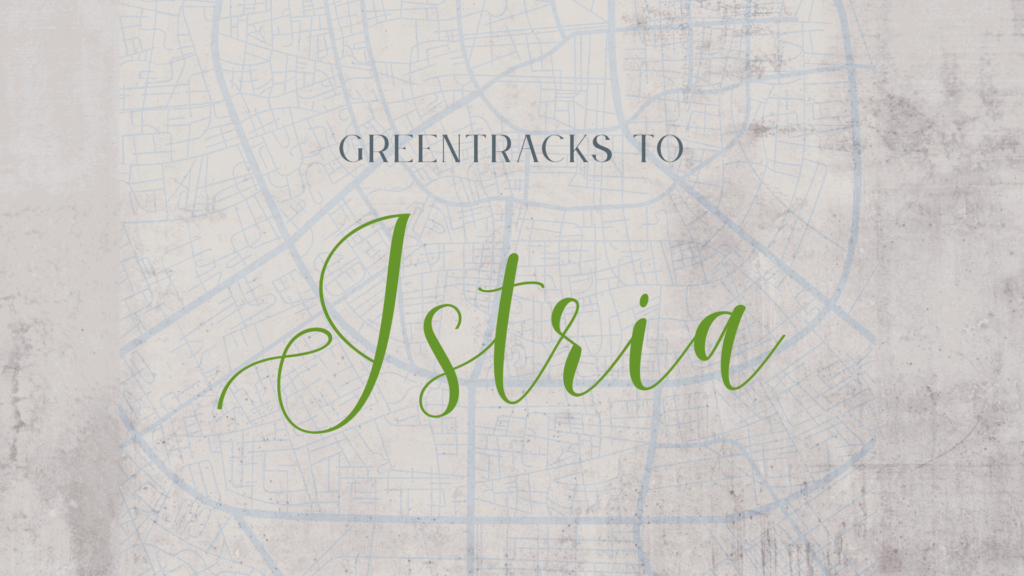
Why Istria?
Istria is the Northern peninsula of Croatia. Inland the land is hilly and fertile; quality olive oil and wine is produced here. The coastline is scattered with villages and ports and crystal waters. Istria is only 30 minutes drive from the Italian border. It is not supported by a huge rail infrastructure but I have found some options for getting around.
Croatia shares borders with many different countries which make interrailing a great option if you are looking for adventure far from home. Croatia neighbours Slovenia to the northwest, Hungary to the northeast, Serbia to the east, Bosnia and Herzegovina and Montenegro to the southeast, and shares a maritime border with Italy.
Istria was inhabited by the Illyrians and more specifically, the Histri, from around 11th century BC, the Romans invaded the Histri and created a major port in Pula, in fact you can visit the Arena today.
You will find the fingerprints of Slavic tribes, the Byzantine Empire and the Venetians. In fact, if you know Venice well, you may recognise Saint Marco’s lion in Rovinj and neighbouring Piran (Slovenia).
Istria has been through many changes more recently in contemporary history. After WW1, Istria was in the hands of the Italians once again. After WW2, the area was occupied by Yugoslavia and remained in the hands of Yugoslavia as well as Italy. In the 1990s it regained its independence as a state of Croatia.
In the language, food and architecture, you can feel mixture of cultures that have come to influence this part of Croatia.

Getting There
If you are starting in the UK could take the overnight ferry from Newcastle, Hull or Harwich, arriving in Rotterdam. It is then around 2.5 hours to Dusseldorf where you can pick up the Urlaubs express! This is a night train so you can get your own bed and then the next day arrive in Villach, Austria. From here it is around 250km or 3 hours to Novigrad in Istria.
If you want more versatility on your trip, you could think about taking your car. There is a great tip for people travelling from the UK to Istria with their car. In Germany there is a train that is a car carrier. This is so great because if removes a whole chunk of your road journey, allowing you to rest and enjoy the ride so much more. The train is called the Urlaubs express and for UK travellers you can pick it up in Hamburg and leave it in Villach in Austria. This will save you miles and miles or road, bringing you closer to Istria.
An important thing to consider if you are driving to Istria is to research the driving laws in each country. When we travelled to Istria from Italy, we passed through Slovenia. To drive through Slovenia, we were required to buy an electronic pass. This is prepaid online with a cost of around 30euros and automatically registers to your car. When you pass through check points your pass will go through directly and you will avoid paying any fines.
Another thing to add to your check list, different countries have different requirements for road use. In Italy you must carry a high visibilty jacket and a triangle hazard sign we had to ensure was that we had a spare set of bulbs and snow chains in our boot.
FlixBus operates from Trieste and travels all the way into Istria. Trieste to Rovinj takes 2 hours and one of the best things about Flixbus is the amazing value of the tickets. The Flixbus covers connections to Umag, Porec, Pula and Rijeka.
And my final tip for getting to Istria would be to take the ferry from Venice. The Atlas Kompas ferry operates in summer months and will take you to Umago, Parenzo, Rovigno and Pula.www.hzpp.hr



Getting Around
Train services are run by Croatia’s national rail network, Hrvatske željeznice (HZ)and they easily connect Split, Perkovic and Zagreb. Tickets and timetables can be found, in English, on their website www.hzpp.hr. Unfortunately, Istria has a limit rail infrastructure in Istria but here are two possible trips that you could take.
Starting from the Italian city of Trieste you can get to the coastal town and port of Rijeka. This tourist train cuts through the Istrian countryside and stops in a few small towns along the way. You can research your trip here: https://prodaja.hzpp.hr/ A one way ticket costs 8 euros, a return ticket costs 16 euros, and ticket prices for children between 6 and 12 years is 4 euros. You can also take you bike onboard at a cost of 5 euros.
A second great train connection in Istria is the line between Pula and Pazin. This train line opens different aspects of Istria to people who are travelling without a car. Pula is a coastal town while Pazin is a hilltop town that has caves that you can visit and a zip wire. If you are staying in either Pula or Pizan, this train will give you the opportunity to get variety out of your trip.. The ticket costs 2.60 one way and takes around 1 hour 10 and you can buy the tickets here www.hzpp.hr

